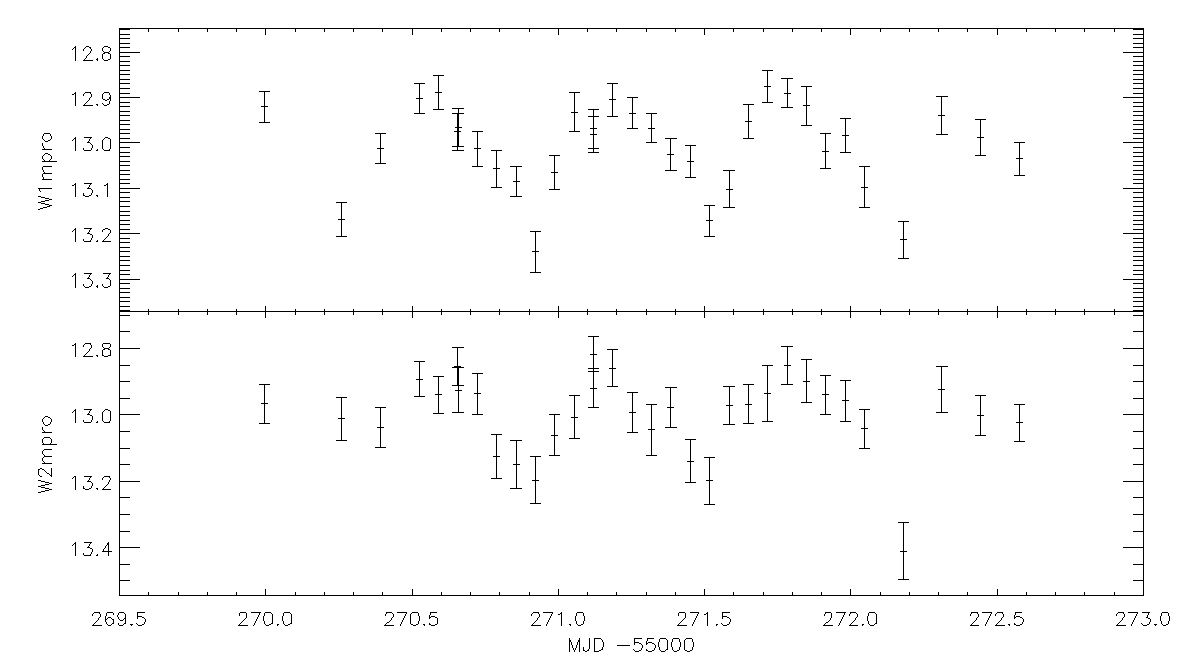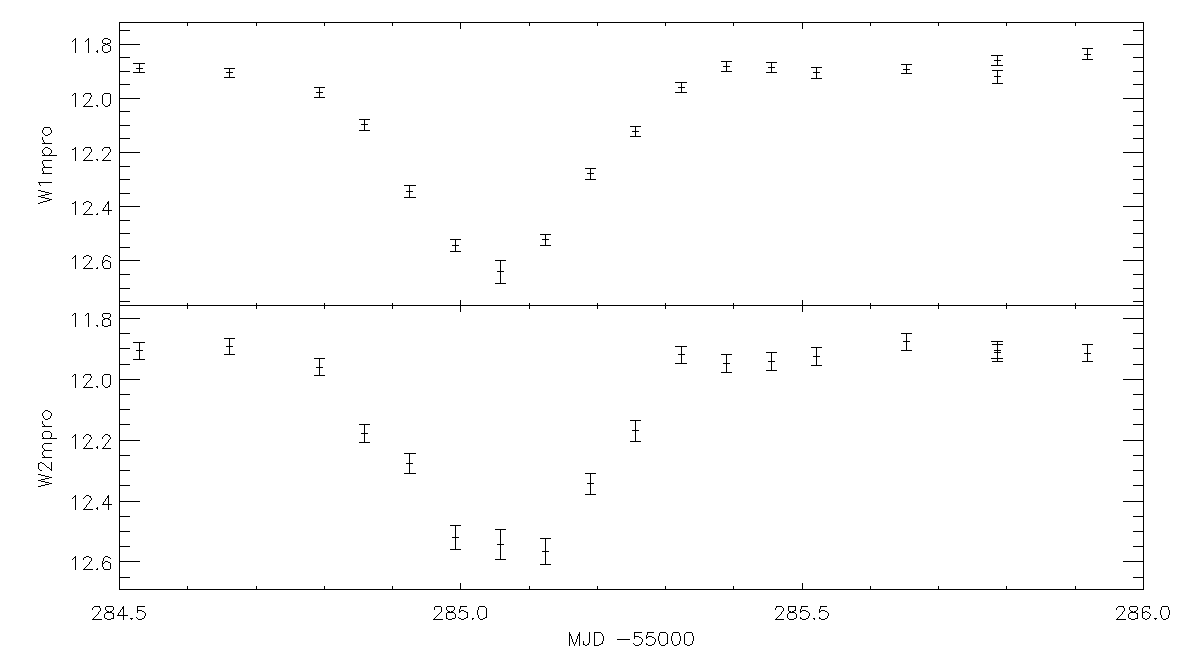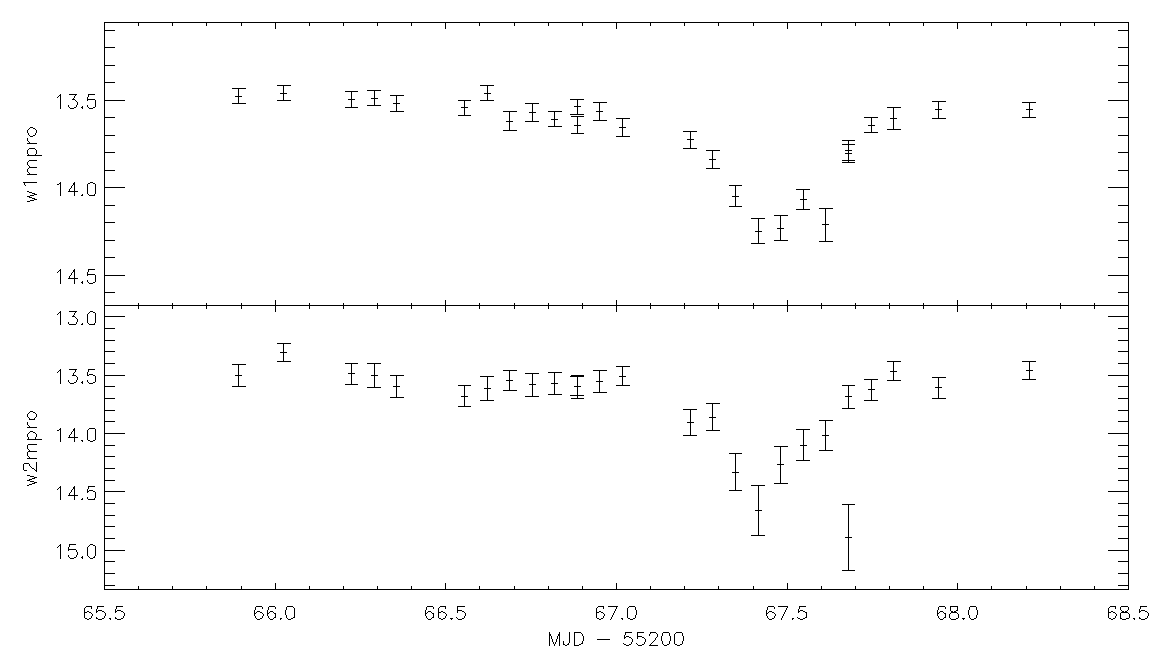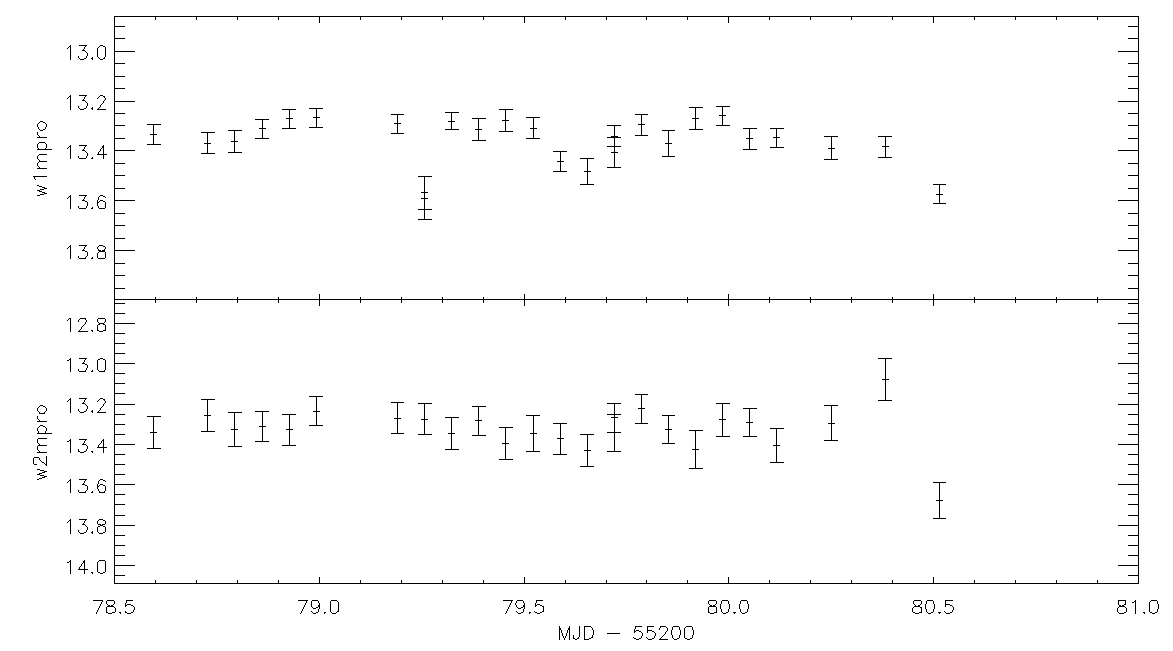The method relies on a generating a chi-square distribution using the standard deviation of the individual flux measurements of each source (w?sigp1). As a first pass, sources are pre-filtered to eliminate sources that have inadequate or insufficient data available to make a variability determination. The following are the pre-filters used and a brief purpose of each:
| w?nm / w?m > 0.8 | Reliability of single-frame measurements. Tthis helps to ensure there is a detection of the source in the level 1b image. These parameters ensure at least 80% of the frames have a single-exposure detection at the location of the source in the multiframe image. However, this does not ensure there are also Level 1b flux detections for the source, as the Level 1b and the multiframe fluxes are measured at slightly different positions. |
| w?rchi2 < 5.0 | This reduces confusion issues by ignoring high chi square values. High chi square values normally indicate confusion or a extended source, both of which are not suitable for variability flagging. |
| cc_flags = 0 in at least one band | Artifacts, especially diffraction spike artifacts, can produce variability since the artifact location and intensity can vary between frames. Variability flagging is unreliable in the presence of artifacts and is avoided. |
| w?m > 10 | Small depth of coverage produces unreliable statistics since outliers have a larger effect on the overall variability. This filter helps to ensure the variability is significant. |
| Single-frame SNR proxy > 5.0 | This helps to ensure there is a single-frame detection--see description of the proxy below. |
| w?snr > 5 | The coadd SNR must be significant, otherwise there will be no Level 1b detections. This filter ignores sources that are too faint to have any Level 1b detections. |
| na = 0 | Eliminates sources with active deblending, which indicates one more more close neighbors that can produce false variability. |
| nb < 3 | This again avoids confusion, which can generate variability. Tests showed that some known variables were still detected with nb = 2, so the threshold was set at this value. For sources with nb > 2, flux variations are seen due to confusion. |
| w?sigmpro not null in at least one band | There must be a multi-frame detection of the source. |
| w?sigp1 not null in at least one band | There must be single-frame measurements for the source. |
To help ensure the variability flag is applied to actual Level 1b detections of the source, a single-frame SNR proxy was generated. The single-frame SNR cannot be estimated simply by using the value w?snr / &radic(w?m) as the multi-frame SNR estimation includes PSF error. To force this relationship to work, the SNR of both single and multi-frame measurements for approximately 100,000 random sources were compiled. A linear fit was applied to the function
| Y(w?mpro) = [&radic(w?m) * (w?snr1b / w?snrc )] | (Eq. 1) |
The standard deviation of the population, &sigma, is determined in each band by taking the 65th percentile of w?sigp1 in magnitude bins of 0.50. These distributions are saved as a look-up table as functions of M and magnitude. They are later interpolated upon retrieval. There is an effective faint-magnitude cutoff at 16.0, 14.75, 10.75, and 7.0 for bands 1,2,3, and 4, respectively. This is due to the lack of usable data at these fainter magnitudes to make the look-up table, as most of the multiframe sources at these fainter magnitudes do not have Level 1b detections. Sources fainter than these magnitudes will always receive a variability flag value of "0" in the appropriate band.
For each source passing the pre-filters, the significance of its w?sigp1 above the non-variable population is determined using the chi-square statistic, with the number of degrees of freedom N = M - 1:
| &chi2 = M*(w?sigp1)2 / &sigma2 | (Eq. 2) |
| PN(&chi2) = P0 * (&chi2)[(N / 2 - 1] * e-&chi2 / 2 | (Eq. 3) |
| P0 = 1/[2N/2*&Gamma(N/2)] | (Eq. 4) |
| F = Floor[-log10(Q)] | (Eq. 5) |
It should be noted that the var_flg values cannot be replicated using Level 1b flux measurements. The algorithm uses the standard deviation of the flux measurements from the single-exposure frames in the multiframe pipeline. These flux measurements are taken at the position of the catalog source, which can differ slightly from the location of the source in the Level 1b images. Therefore, the fluxes used in the calculation of w?sigp1 are not the same as the Level 1b flux measurements.
Figures 5 and 6 are two example light curves of sources with high variability values in both band 1 and 2.
 |
 |
| Figure 5 - An example RR Lyr light curve with a variability flag of '9900'. | Figure 6 - An example Eclipsing binary light curve with primary eclipse with a variability flag of '9900'. |
Figures 7 and 8 illustrate objects with variability in bands 3 and 4. In Figure 8, bands 1-3 are assigned F=0 due to the catalog source being flagged as an artifact in those bands. In this case, the artifacts do not appear to affect the light curve.
Figure 9 is a light curve that illustrates a limitation of the algorithm. The source is an eclipsing binary, however, the var_flg string is '9100'. The source is bright enough in W1 where the short deviation of the eclipse is great enough to produce a significant RMS departure from the reference population. However, in band 2, F=1, and the source is classified as non-variable, even though the eclipse is obvious in the light curve. This happens because the reference RMS for the magnitude in W2 is higher than in W1, and the few deviant flux measurements near the eclipse are not enough to produce a significant RMS departure. This issue will be addressed in the final WISE release.
 |
Figure 9 - An example of a problem where band 2 gets assigned F=1 despite an obvious eclipsing binary light curve. See text for details. |
Sources with F=8 or F=9 can generally be regarded as safely variable. Variability in sources with F=7 starts to become more uncertain. While the majority of F=7 are still variable, many of the known issues discussed in the next section start to become more common. Figure 10 illustrates a source that has a variability flag of '7100'. In this case, W1 is still statistically variable, although the amplitude is quite small compared to the error estimates. Band 2 in the same figure is non-variable and received a value of F=1.
 |
| Figure 10 - A source with a variability flag of '7100', illustrating marginal variability in W1 and no variability in W2. |
var_flg[1]='[8-9]' and var_flg[2]='[8-9]' and var_flg[3]='[6-9]'
The search "var_flg matches '[8-9][8-9][6-9]?'" would also execute the same search in a more compact form. In most cases, it is best to place a constraint on at least two bands to lower the likelihood of one of the known issues driving the variability. When trying to exclude variability, remember that a value of "0" means insufficient or inadequate data to make a determination, and that "1" is the value to signify the least likelihood of variability in the band.
Last update: 2011 March 4